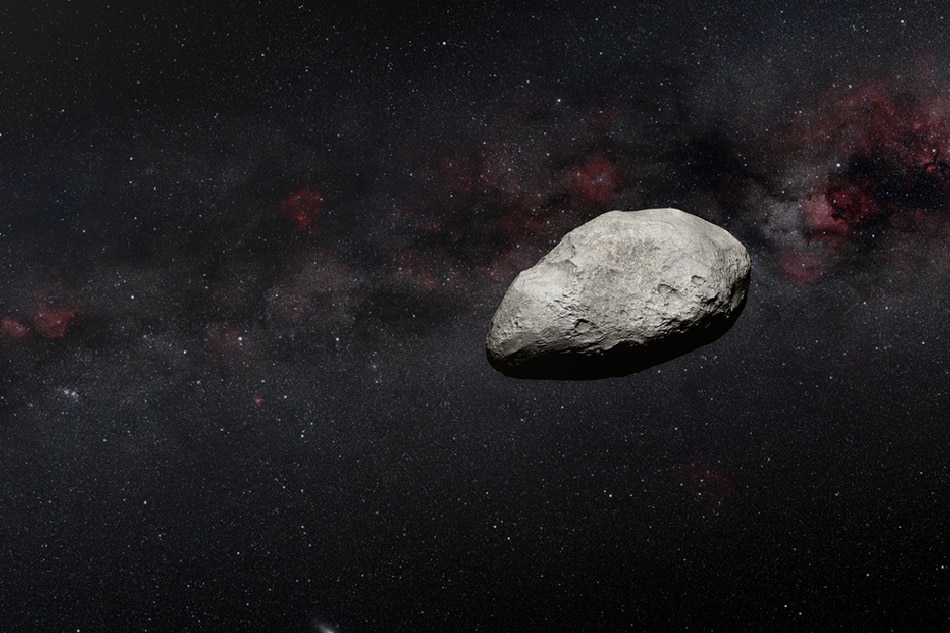Small asteroid 'serendipitously' detected using James Webb telescope | ABS-CBN
ADVERTISEMENT

Welcome, Kapamilya! We use cookies to improve your browsing experience. Continuing to use this site means you agree to our use of cookies. Tell me more!
Small asteroid 'serendipitously' detected using James Webb telescope
Agence France Presse
Published Feb 07, 2023 11:21 AM PHT
European astronomers using the James Webb Space Telescope have detected a previously unknown asteroid about the size of Rome's Colosseum in the main asteroid belt between Mars and Jupiter.
European astronomers using the James Webb Space Telescope have detected a previously unknown asteroid about the size of Rome's Colosseum in the main asteroid belt between Mars and Jupiter.
The asteroid measuring between 300 and 650 feet (100 to 200 meters) in length is the smallest object observed to date using the telescope, the US space agency NASA said Monday.
The asteroid measuring between 300 and 650 feet (100 to 200 meters) in length is the smallest object observed to date using the telescope, the US space agency NASA said Monday.
The European astronomers "serendipitously detected" the asteroid, NASA said in a statement, adding that more observations would be needed to better characterize its nature and properties.
The European astronomers "serendipitously detected" the asteroid, NASA said in a statement, adding that more observations would be needed to better characterize its nature and properties.
"We -– completely unexpectedly -– detected a small asteroid," said Thomas Muller, an astronomer at the Max Planck Institute for Extraterrestrial Physics in Germany.
"We -– completely unexpectedly -– detected a small asteroid," said Thomas Muller, an astronomer at the Max Planck Institute for Extraterrestrial Physics in Germany.
ADVERTISEMENT
It was detected during calibration of the telescope's Mid-InfraRed Instrument (MIRI), which operates in mid-infrared wavelengths.
It was detected during calibration of the telescope's Mid-InfraRed Instrument (MIRI), which operates in mid-infrared wavelengths.
"Webb's incredible sensitivity made it possible to see this roughly 100-meter object at a distance of more than 100 million kilometers," Muller said.
"Webb's incredible sensitivity made it possible to see this roughly 100-meter object at a distance of more than 100 million kilometers," Muller said.
Webb, which has been operational since July, is the most powerful space telescope ever built and has unleashed a raft of unprecedented data as well as stunning images.
Webb, which has been operational since July, is the most powerful space telescope ever built and has unleashed a raft of unprecedented data as well as stunning images.
One of the main goals for the $10 billion telescope is to study the life cycle of stars. Another main research focus is on exoplanets, planets outside Earth's solar system.
One of the main goals for the $10 billion telescope is to study the life cycle of stars. Another main research focus is on exoplanets, planets outside Earth's solar system.
Webb was not designed to look for small objects such as the newly-discovered asteroid, but Muller said its discovery "suggests that many new objects will be detected with this instrument."
Webb was not designed to look for small objects such as the newly-discovered asteroid, but Muller said its discovery "suggests that many new objects will be detected with this instrument."
cl/st
© Agence France-Presse
ADVERTISEMENT
ADVERTISEMENT



